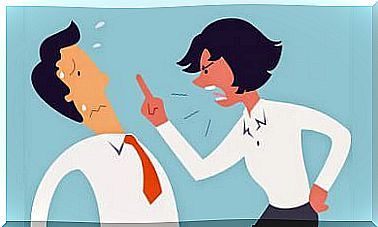This Is What Happens To The Brain When It Sees Sales And Discounts

Naked mannequins, gleaming counters with large posters announcing price cuts of up to 70%. Corridors full of people, the background music and a sense of urgency, as if all those incredible bargains were going to vanish in seconds. What happens to the brain when you see sales and discounts responds to a sophisticated mechanic that is worth knowing.
To think that in many cases we are victims of our own cognitive deceptions and above all of the marketing companies behind it produces, at least, a certain anger. However, even so, who more and who less falls into this dynamic at Christmas time, black friday or any media campaign in which that of “liquidation at incredible prices” is announced.
Clothing, technology, decoration and even products for our pets. Large companies know how to apply sophisticated techniques to captivate our brain, which can make us end up regretting any of our purchases on more than one occasion. Let us therefore discover those psychological mechanisms to captivate us (deceive ourselves).

What happens to the brain when you see sales and discounts?
The story goes that the one who led the way in the universe of the war of prices, discounts and rebates was the astute Aristide Boucicaut, owner of the first Le Bon Marché department store in France. It was the year 1869 and until now, when buying it was common to resort to haggling. Mr Bouciaut changed everything by marking a fixed price for his products by means of a label.
That strategy made things easier. But later, he discovered another interesting strategy. When there was an accumulation of a product, it was out of season or it was simply not sold, it was enough to reduce the price, advertise it with great fanfare to increase demand. That changed everything.
Today, we have replaced Mr. Aristide Boucicaut with sophisticated neuromarketing companies that study consumer behavior in detail. Nothing we see in physical and virtual stores is casual. So, let’s find out what happens to the brain when it sees sales and discounts.
Hurry or you will miss it! (Sales = unique opportunities and sense of urgency)
The brain is attracted to innovative stimuli and, above all, opportunities. In times of sales our streets and also the virtual portals of the stores are filled with striking hooks that capture the attention of the brain. Big prices in red. Labels in which old prices are crossed out. Pay one and get another for one more euro.
Studies, such as those carried out at the Center for Cognitive Neuroscience at the University of California, indicate that there is a specific region that encourages us to process these stimuli emotionally. The medial prefrontal cortex causes us to anticipate, for example, that we will find real bargains during sales times.
What’s more, it also inoculates us with the feeling that if we don’t make that purchase quickly, others will take the desired product.
Irrationality. “Odd prices” are perceived as significantly lower
Experts point out that what happens to the brain when it sees sales and discounts is that it thinks irrationally. Much of the blame lies in the odd prices. That is to say, those trousers that are worth 29.99 euros, those brand shoes whose label appears 49.99 euros or that blouse of 19.99 euros are very attractive to our mind.
Second unit free or half price! (but do I really need to have two?)
We all come to mind a product or certain brands, which usually advertise that of “and the second unit for only one euro more. ” They are also without a doubt the stores that announce that we can buy two for one or the second at a 50% discount. All this responds to a clever strategy because many times the first product is already priced high enough to compensate for the acquisition of the second.
However, at the neurological level there is a more interesting bias. Emotions hijack us and prevent us from thinking logically: in most cases, we do not need to have two products. Therefore, we will end up paying an excessive price for something that is not always useful to us.

What happens to the brain when it sees sales and discounts is a conflict between the rational and the emotional
When we see sales and discounts, the brain faces a conflict. To understand it better, we will give an example. We want to buy a mobile phone, to which they have applied a small discount. The final price is still high but still, we long to have a phone from that specific brand.
On the one hand, we have the medial prefrontal cortex that reinforces the emotional impulse to buy. On the other, the dorsal anterior cingulate cortex urges us to see this situation more rationally. Do you really need it? Is it really worth it now to pay that amount of money?
This internal conflict is something that we experience on many occasions when purchasing a product. These brain regions, which in themselves may seem opposing to us, actually are not so much so. Because together, they often help us make better, better and smarter decisions …









